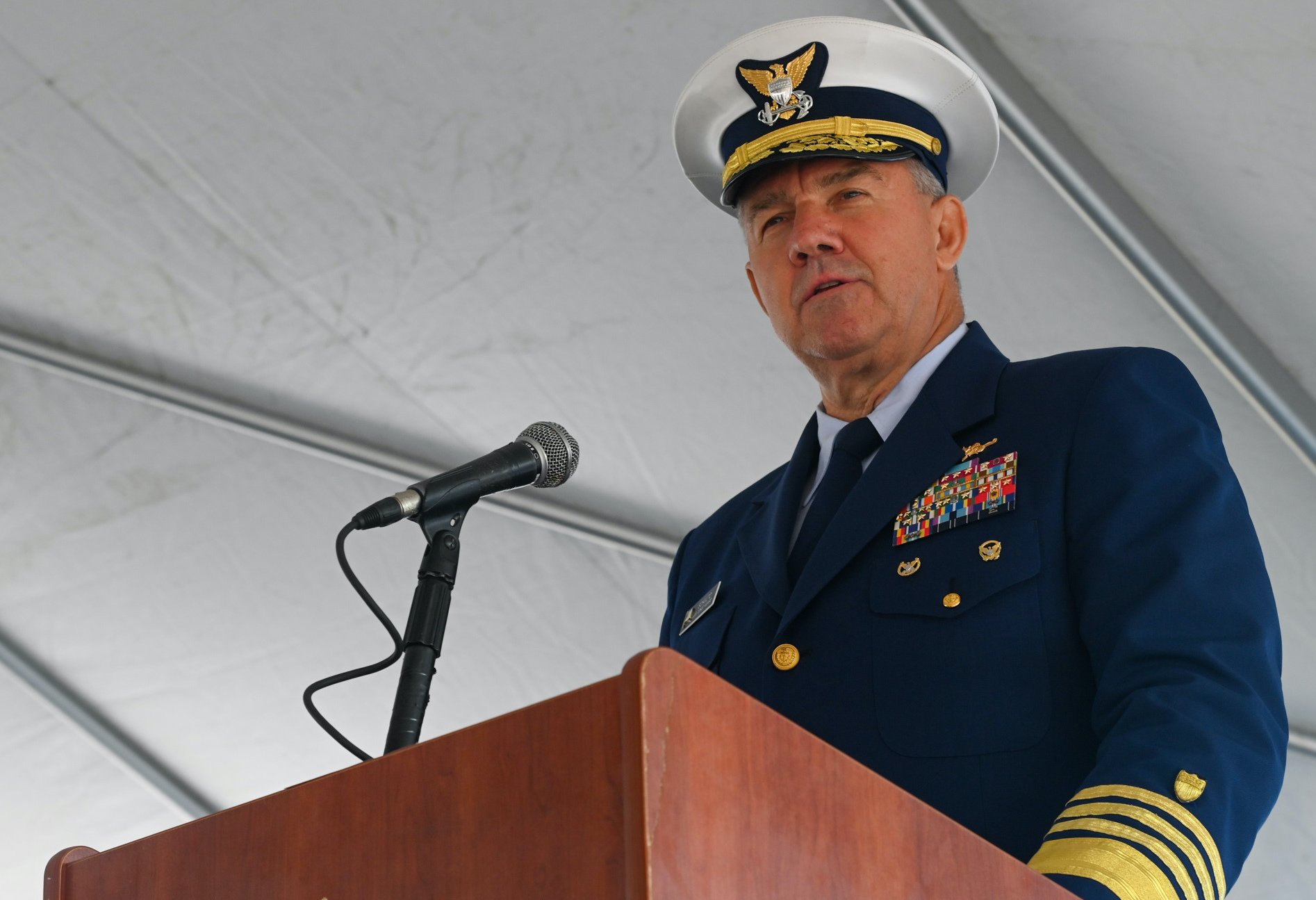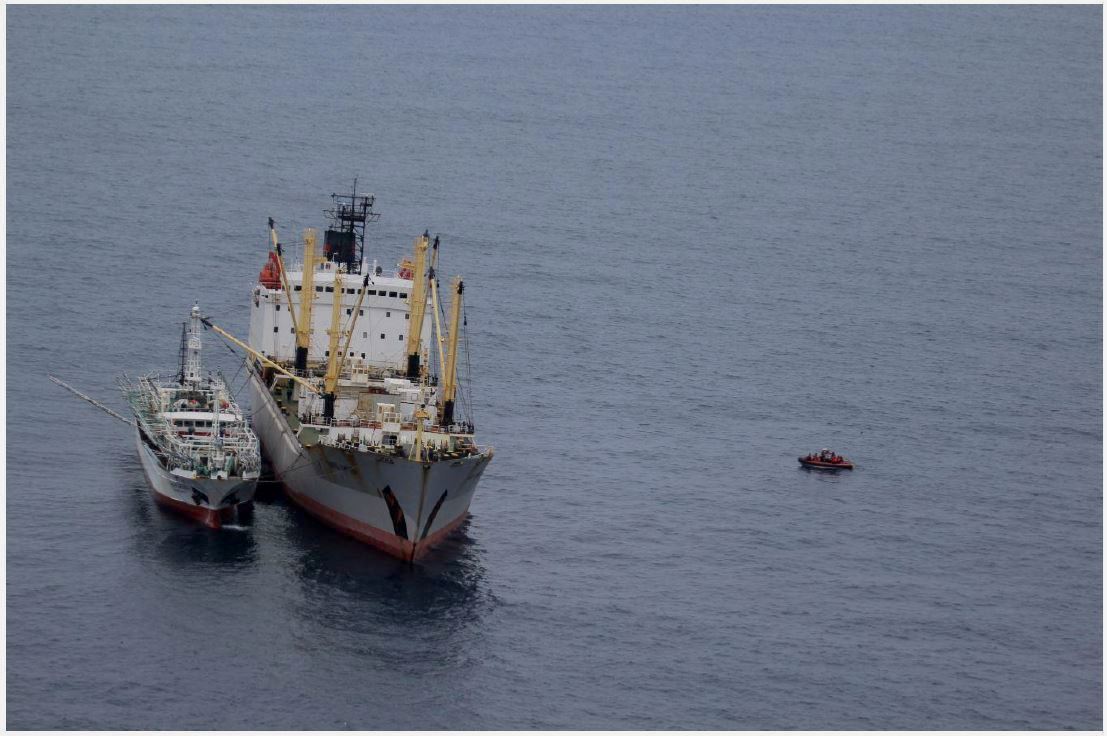
This post is part of a series looking back at the top naval stories from 2021.
The past year saw a shift in the Coast Guard, as the maritime service focused on retention, its global presence and new partnerships with the Marines and the Navy.
In his third “State of the Coast Guard,” Adm. Karl Schultz spoke about the demand for the Coast Guard both at home and overseas.
Schultz signed the 2020 Tri-Service Maritime Strategy, also signed by Marine Corps and Navy leaders, which noted the Coast Guard’s global expansion.
Partnerships with Navy and Marines

Under the 2020 Tri-Service Maritime Strategy, the Navy’s priority would be controlling the seas, while the Marine Corps focused on increased expeditionary combat power. The Coast Guard’s role would be its focus on more overseas outreach.
In 2021, the Coast Guard sent an attache to the U.S. Embassy in Copenhagen, with another attache planned to be sent to Singapore in 2022.
The changes in the Coast Guard and the Marines might change how the two forces partner together, Shultz said.
That partnership will likely be helped by the force’s growing National Security Cutter fleet, which can do patrols and other work that might help free up Navy ships.
The Coast Guard will be establishing more seagoing billets as it builds up the NSC fleet, Schultz said during a Heritage Foundation talk. Although those billets are attractive to members of the Coast Guard, there has to be a balance between overseas missions and ones at home.
Chinese concerns

One major area of concern is China, Schultz said. China passed a law that went into effect on Feb. 1 that gave the Chinese coast guard more broad authorities.
The Chinese coast guard is the biggest in the world and tends to do more than coastal patrols.
In 2020, the Chinese fleet was near Ecuador, which raised concerns about illegal fishing.
That continues to be a concern for the Navy, as well as the Coast Guard, with Navy Secretary Carlos Del Toro sounding the alarm during a Center for Strategic and International Studies talk that Schultz also attended.
The Coast Guard can bring awareness to illegal fishing through maritime law enforcement training and sharing information with coast guards and navies in affected areas, Schultz said during the talk.
The Arctic

China, as well as Russia, continues to be a concern in the Artic. While the Trump administration requested the Coast Guard look into nuclear-powered icebreakers, the service declined to pursue them, USNI News reported in January.
Instead, Schultz focused on his “six-three-one strategy,” which calls for a minimum of six icebreakers, three of which need to be heavy. And the Coast Guard needed one right away, he said in January.
Personnel

Official U.S. Coast Guard photos by Petty Officer 2nd Class Richard Brahm.
As the Coast Guard looks toward 2022, retention will continue to be a problem, Schultz predicted during the Heritage Foundation talk.
Due to a new retirement system, personnel is able to leave the service earlier, with some choosing to do so due to the stability of not moving and increased salary.
In order to combat that, the Coast Guard will have to figure out ways to incentivize people to stay, which could be the overseas billets, he said.
The force is also concerned with diversity, looking to have more women join the Coast Guard, Schultz said in his most recent State of the Coast Guard address.
The force is currently about 15 percent women, although the percentage is higher at the Coast Guard Academy.





